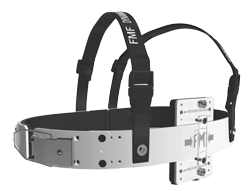Pectus Carinatum
Pectus Carinatum
What is Pectus Carinatum?
Pectus carinatum is a congenital condition where the breastbone protrudes outward. It usually is not noticed until the child nears puberty. However, it can be present since birth. It is not typically associated with any cardiac or respiratory problems, but can cause pain, self-esteem, and self-image concerns for your child during their teenage years and beyond.
The treatment for pectus carinatum is considered elective (optional) by insurance providers and in most cases the treatment is not covered by insurance. The optimal age for treatment is between 12 and 15 years when the chest is flexible and can be reshaped. There are differences in the design, profile, comfort, and cost of each type of brace for pectus carinatum. However, the biggest way to be successful in changing the chest appearance is consistently using the brace. Research studies have demonstrated that compliance in wearing a brace is key in obtaining the desired outcomes.
Treatment Options
Observation/No Treatment
There are times when no treatment or periodic monitoring could be the chosen method for managing pectus carinatum. This approach is generally beneficial for a child with a minimal chest wall deformity, a child for whom the appearance of the chest wall is not bothersome, or a child who is not ready or willing to wear a brace.
Bracing
Pectus emBraceTM
The Pectus emBrace™ utilizes force plate technology to provide compression over the chest. The Pectus emBrace™ is the only brace that has no metal components, allowing for full range of motion and comfort. There is a magnetic claps securement device with a closure that you twist clockwise for adjustment.
 FMF Dynamic Compression System®
FMF Dynamic Compression System®
The FMF Dynamic Compressor System® is the only Pectus Carinatum system that we offer with measurable force of correction and force of treatment. The entire brace is custom made based on 3D measurements and the force plates can be tailored to each individual patient.
Next Steps
- The initial consultation visit will be with Pediatric Surgery.
- After that, you will likely see a combination of Orthotics and Pediatric Surgery. Orthotics will have a measurement/scanning appointment (regardless of which brace you choose), as well as an adjustment/fitting appointment.